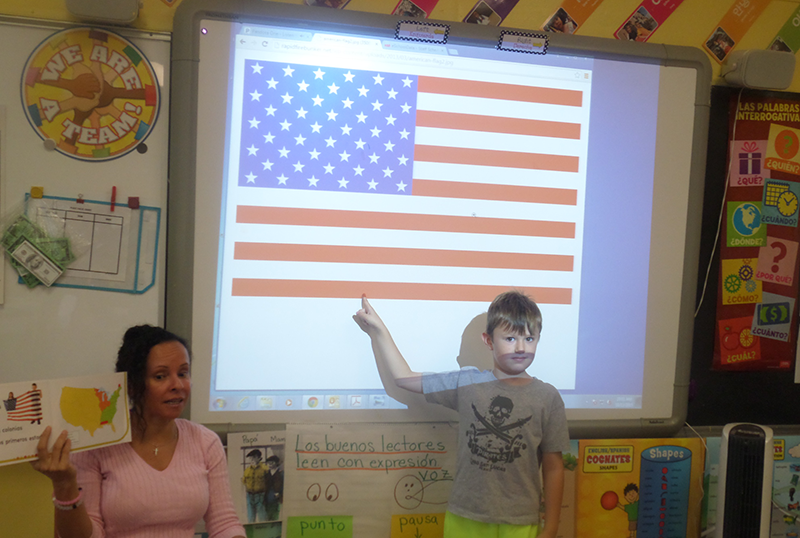A $250,000 state grant will help the Mineola school district grow a program aimed at making students into bilingual citizens of the world.
The grant from the state Education Department’s Office of Bilingual Education and World Languages, awarded in mid-January, will fund the expansion of the district’s “dual language program,” eventually allowing students to take classes in both English and Spanish from kindergarten through middle school.
The program launched in fifth-grade classes at Mineola Middle School this year and will start in grades six and seven in the next two years, Nicole Moriarty, the district’s director of English as a new language, said.
It teaches children a second language at a young age, something that has huge value for both English and Spanish speakers, Moriarty said.
But it also helps students learn to appreciate different cultures and to form relationships with people from different backgrounds, lessons that have a big impact beyond the classroom, she said.
“It’s programs like these, and parents like ours that support programs like ours, that will continue to make our world a better place,” Moriarty said.
In the program, started in 2013 in kindergarten through second grade, classes containing a mix of students who primarily speak Spanish or English take lessons in English half the time and in Spanish the other half.
Some 322 students are enrolled in dual-language classes, with another 80 expected to join as kindergartners in September, according to a school district news release.
Mineola won one of several state bilingual education grants available to districts without a bilingual education program or that want to expand one to a new school, according to the state Education Department website.
The money, distributed in $50,000 increments over five years, will pay for Spanish literature for school libraries, classroom materials and opportunities for teachers to work together to build the dual-language curriculum, Moriarty said.
“It is no easy task for anyone to win a grant,” Michael Nagler, the district superintendent, said at last week’s Mineola school board meeting. “It’s particularly difficult because of our relative wealth as a district, we don’t qualify for a lot of grants, so right off the bat you can’t even apply because you don’t meet the basic criteria.”
The district aims to eventually have every student graduate with a bilingual literacy seal on the diploma, Moriarty said.
About 19 percent of Mineola’s roughly 2,700 students speak a primary language other than English, and 12 percent take classes in English as a new language, Moriarty said.
The dual-language program was started amid demographic change in Mineola and several other North Shore districts. The proportion of Hispanic and Latino students increased to 24 percent in the 2014-15 school year from 17 percent in the 2005-06 year.
Research has shown bilingual education programs have benefits in the classroom and beyond, Moriarty said.
One 2010 study by Johns Hopkins University researchers found bilingual classes improved Spanish-speaking students’ English skills as much as English-only programs or more.
The program also teaches both English and Spanish speakers how to collaborate with people from different cultural backgrounds, Moriarty said.
Spanish-speaking students often help English-speaking students struggling with the new language, and vice versa, she said.
“It’s that leveling of the playing field that is just really amazing to see in the classroom,” Moriarty said. “When they’re so young, to help them raise their own awareness of culture is just an amazing feat.”
Familiarity with different cultures will help students navigate their increasingly diverse community and globalized world, especially as they move into college and the workforce, Moriarty said.
To Moriarty, that familiarity is especially important amid a political backlash against globalization and diversity, as reflected in the election of President Donald Trump.
“When you see [students] reading together, using their devices together, solving a problem togther, you know that everything is going be OK,” Moriarty said.



